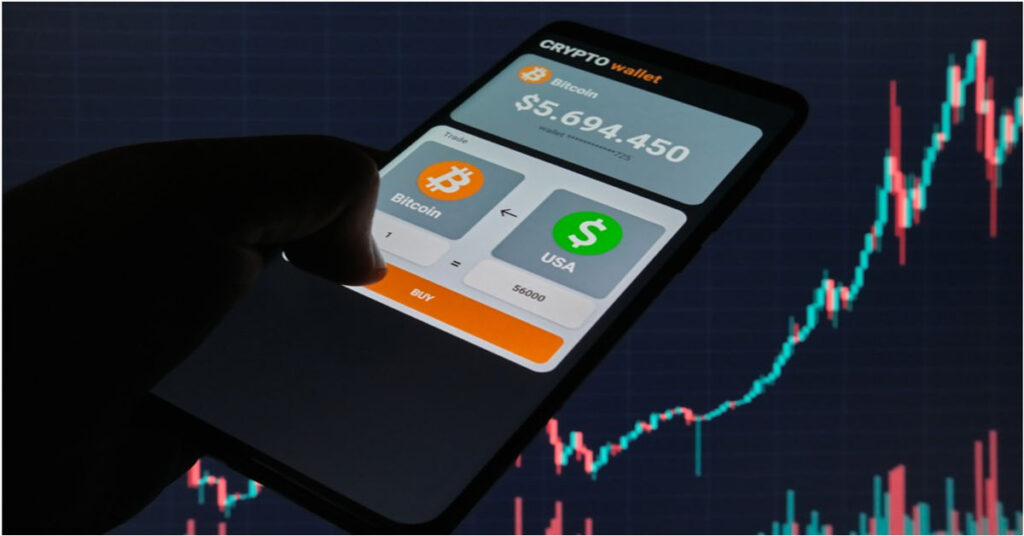When convertingBTC to USD, you expect a smooth, secure, and efficient transaction. Automated crypto conversion systems promise just that: speed and convenience without the need for manual oversight.
However, risks are involved like anything in the digital world, especially regarding security. If you’re using these systems, it’s crucial to understand the potential cybersecurity threats they face.
Here’s a breakdown of the most common cybersecurity threats in automated crypto conversion systems and what you can do to protect yourself.
1. Phishing Attacks
Phishing is one of the most common and effective forms of cyberattacks. Impersonating a legitimate service involves tricking users into providing sensitive information like passwords, private keys, or two-factor authentication codes.
When you’re converting BTC to USD, you might receive an email or message that appears to be from your crypto exchange or automated service. These messages often contain links to fake websites that look almost identical to the real ones.
Once you enter your details, hackers gain access to your accounts and can drain your funds before you even realize what’s happened.
How to protect yourself: Always double-check the URL of the website you’re visiting, and never click on links from unsolicited emails or messages. Use two-factor authentication (2FA) whenever possible, and be cautious when sharing sensitive information.
2. Man-in-the-Middle (MITM) Attacks
MITM attacks occur when a cybercriminal intercepts the communication between you and the crypto conversion platform. These attacks can happen over public Wi-Fi networks or through malicious software installed on your device.
During an MITM attack, hackers can alter the details of your transaction, like changing the recipient’s wallet address so that the funds are sent to them instead of where you intended.
How to protect yourself: Always use secure, private internet connections and avoid public Wi-Fi when dealing with crypto. Encrypt your communications using a VPN (Virtual Private Network) and keep your software up to date to patch any security vulnerabilities.
3. Smart Contract Vulnerabilities
Automated crypto conversion systems often use smart contracts to facilitate the conversion of cryptocurrencies like BTC to USD. While smart contracts are tamper-proof, they are not immune to bugs or vulnerabilities.
Hackers can exploit poorly written smart contracts to execute unintended functions or withdraw funds from the system. Once deployed, smart contracts are complicated to modify, so any vulnerability could be permanently baked into the system, leading to long-term risks.
How to protect yourself: Choose reputable platforms with a history of security audits and are transparent about their smart contract processes. Regular audits help identify and fix vulnerabilities before attackers can exploit them.
4. Exchange Hacks
Crypto exchanges, where many automated systems operate, are prime targets for cybercriminals. If the exchange you’re using is hacked, your funds may be at risk even if you weren’t targeted.
In the past, we’ve seen exchanges lose millions of dollars worth of cryptocurrency due to inadequate security measures. When an exchange is hacked, the repercussions can devastate users who store their funds on these platforms.
How to protect yourself: Store your funds in a personal wallet, preferably a hardware wallet, rather than leaving them on an exchange. Keep only the amount you need for conversions on the platform itself, and withdraw any remaining balance immediately after completing the transaction.
5. Ransomware Attacks
Ransomware is malicious software that locks you out of your system until you pay a ransom, typically in cryptocurrency. If compromised, Automated crypto conversion systems could become a channel for distributing ransomware or be held hostage by cybercriminals.
Hackers could gain control of the automated system and demand a ransom in exchange for restoring access. This could halt transactions and cause major losses for users relying on the system.
How to protect yourself: Always update your devices and software to reduce vulnerabilities. Use antivirus software and avoid downloading suspicious files or software. Regularly back up your data in case you’re ever targeted by ransomware.
6. Insider Threats
Sometimes, the danger comes from within. Insider threats involve employees or partners of a company intentionally exploiting the system for their gain. These individuals may have access to sensitive information like private keys or transaction details, making it easier for them to steal funds or cause system disruptions.
This betrayal can lead to significant losses in the crypto world, as insiders often know how to bypass security protocols undetected.
How to protect yourself: Use platforms that implement strict access control policies and conduct regular background checks on employees. Decentralized exchanges (DEXs) may offer an extra layer of security, as they reduce the need for centralized authority figures with extensive access.
7. Distributed Denial of Service (DDoS) Attacks
A DDoS attack floods a system with overwhelming traffic, causing it to crash or become unresponsive. While this attack doesn’t directly lead to the theft of funds, it can disrupt automated crypto conversion systems and prevent you from completing transactions.
If the system goes down while converting BTC to USD, you could miss out on favorable rates or, worse, experience delays that affect your financial planning.
How to protect yourself: Choose platforms with robust DDoS protection measures. Many top-tier exchanges invest in mitigation strategies to continue functioning even under attack.
8. Malware and Keyloggers
Malware and keyloggers can infiltrate your device and steal sensitive information, like private keys or passwords. Once installed, keyloggers record every keystroke you make, sending your login credentials directly to cybercriminals.
These attacks can go unnoticed until too late, leading to losing your funds during or after a transaction.
How to protect yourself: Install reputable anti-malware software and regularly scan your devices for potential threats. Be cautious when downloading programs or files from unverified sources, and avoid clicking on suspicious links.
Conclusion
While automated crypto conversion systems provide convenience, they’re not without risks. Whether you’re converting BTC to USD or any other cryptocurrency, understanding the cybersecurity threats is the first step in protecting your funds.
Stay alert, follow best practices, and choose secure platforms to keep your transactions safe. By being aware of these common threats, you’ll be ready to enjoy the benefits of automated crypto conversion without falling victim to cyberattacks.







